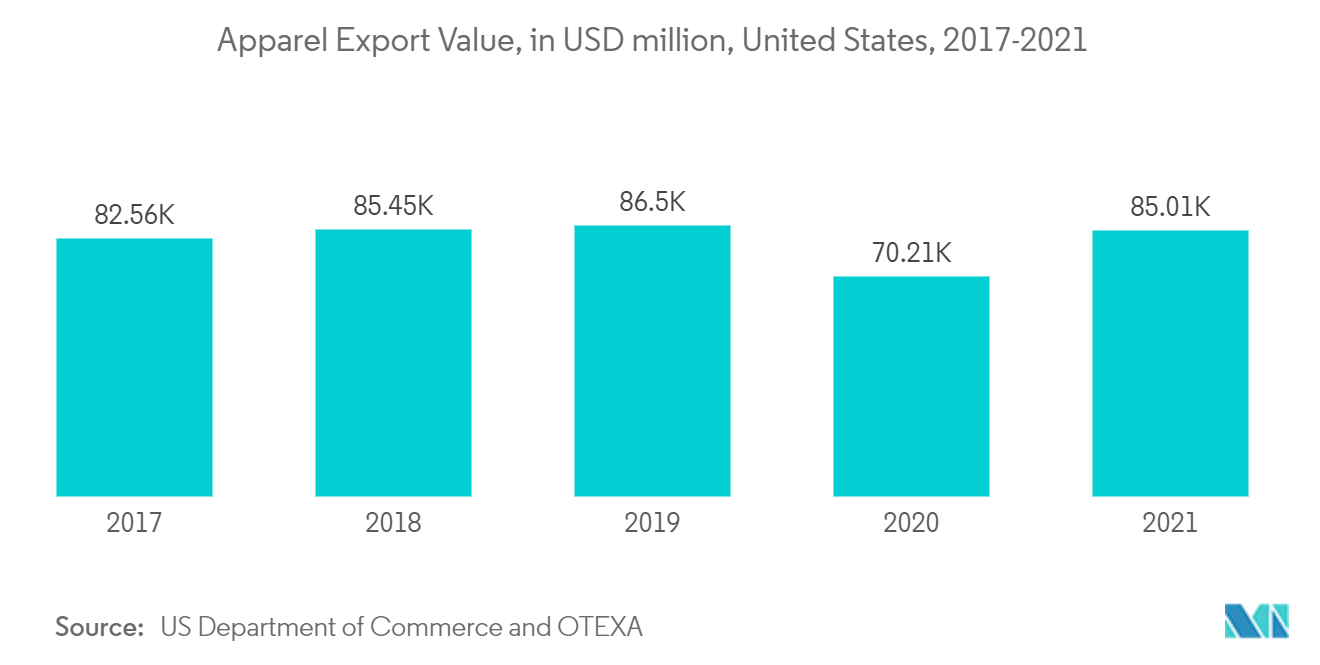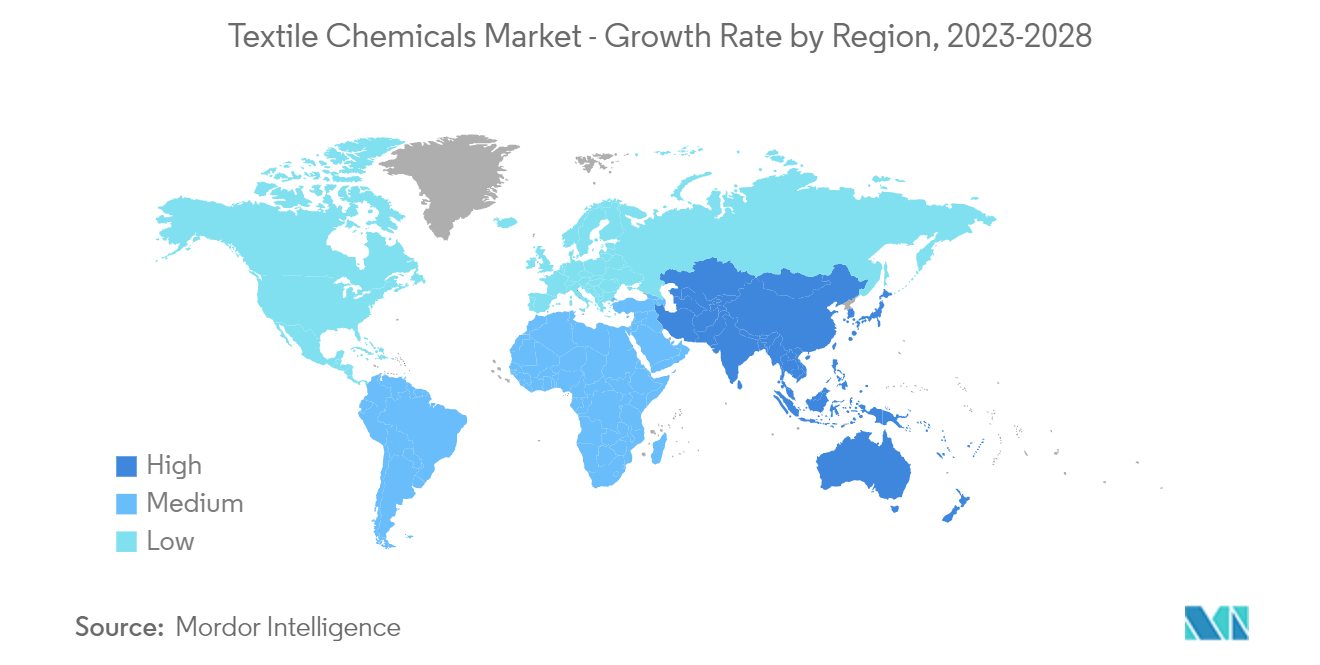Market Trends of Textile Chemicals Industry
This section covers the major market trends shaping the Textile Chemicals Market according to our research experts:
Apparel Application to Dominate the Market
- Apparel is one of the fundamental needs of a human being. The apparel segment encompasses a diverse range of value clothing, office, and business clothing, sportswear, and statement luxury pieces. Textile chemicals are hugely popular in the apparel segment, where they are used at every stage of apparel production, starting from fiber manufacturing, bleaching, dyeing, and printing designs on fabrics.
- An extensive array of chemicals classified under stabilizers, dyes, binders, softeners, leveling agents, mercerizing agents, etc., are used in apparel production. Finishing chemicals are also finding high penetration in apparel design and development to address specific requirements of the intended end use. For instance, in sportswear, antibacterial and dust-repellent clothing are gaining high importance. Similarly, wrinkle-resistant home clothing and businesswear (obtained from crosslinking with citric acid xylitol) are becoming common among the upper-middle income population.
- The modern-day apparel industry is witnessing high growth trends owing to the development of innovative designs, growing accessibility to preferable fashion choices, and the adoption of good marketing strategies by textile industry players. The increased exposure to the internet and e-commerce among consumers has improved the fashion consciousness and availability of high-end brands and limited-edition products. The evolutionary pressure from the apparel segment benefits the textile chemical market by boosting their consumption.
- Furthermore, clothing is a crucial export commodity in several countries. According to the International Labour Organization, more than 60% of the world's clothing exports are manufactured in developing countries, with Asia-Pacific accounting for 32% of the share. China, the biggest apparel market in the Asia-Pacific region, registered a 17.35% hike in garment export shipments valued at USD 189.35 billion in the first seven months of 2022, as per the General Administration of Customs China.
- On the other hand, the United States boasts a thriving fashion and clothing industry despite costly labor and raw material. The country witnessed around a 5% y-o-y increase in the total number of fashion designer businesses. Furthermore, the country has strengthened its clothing trade over the years, closing the year 2021 with USD 85,007 million export value (revealed by the US Department of Commerce and OTEXA), up by 21.07% from the apparel export value obtained in 2020.
- The increase in apparel trade and growing fashion trends are significant factors that are expected to trigger large volume consumption of textile chemicals, thus fueling the growth in the demand for the studied market during the forecast period.

Asia-Pacific Region Expected to Dominate the Market
- The Asia-Pacific region dominates the global textile chemicals market owing to the presence of matured downstream textile manufacturing industries in countries like China, India, Bangladesh, and Vietnam. The availability of cheap labor and low production cost back the growth of the textile industry in these countries.
- Furthermore, the shift in consumer perception of affordable and comfortable clothing, as well as the expanding industrial and automotive manufacturing industries increase the demand for high-value and functional fabrics in the region.
- China owns the world's largest textile industry in terms of both production and export volumes. China's textile industry continued steady expansion in the first nine months of 2022, according to data from the country's Ministry of Industry and Information Technology. The combined operating revenue of major textile enterprises in China rose by 3.1% y-o-y reaching CNY 3.86 trillion (USD 570 billion) in that period.
- China's demographics support the attractive sales of fashion, professional and athletic apparel. The country's rising disposable income has resulted in a surge in average expenditure on clothes in the historical period. In 2022, around 60% of Chinese consumers purchased fashion apparel from domestic clothing brands.
- According to IBEF, the Indian textile and apparel industry is estimated to reach USD 190 billion by 2025-2026. India has a 4% share of the global trade in textiles and apparel. In FY 2022, India's textile and apparel exports amounted to USD 44.4 billion, registering a whopping 41% y-o-y increase.
- India's textile industry is undergoing a massive turnaround with the active enforcement of schemes such as Integrated Textile Parks (SITP) and the Technology Upgradation Fund Scheme by the government. Further, the country is expecting to attract USD 120 billion worth of foreign investments by 2025 supported by the availability of diverse natural and synthetic fibers and yarns.
- Thus, the rising investments and advancements in the textile industry are projected to benefit the textile manufacturing sector, thereby propelling the growth of the market studied.


